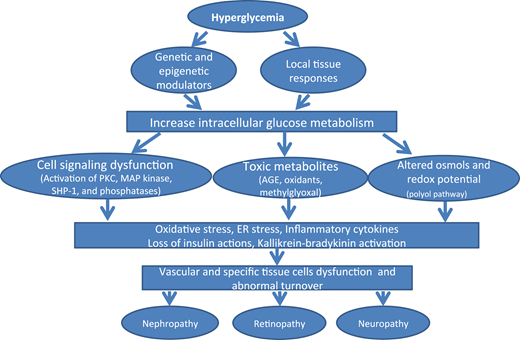Full Statement: Diabetic Microvascular Disease: An Endocrine Society Scientific Statement
JCEM, Volume 102, Issue 12, December 2017
Eugene J Barrett, Zhenqi Liu, Mogher Khamaisi, George L King, Ronald Klein, Barbara E K Klein, Timothy M Hughes, Suzanne Craft, Barry I Freedman, Donald W Bowden, Aaron I Vinik, Carolina M Casellini
Both type 1 and type 2 diabetes adversely affect the microvasculature in multiple organs. Our understanding of the genesis of this injury and of potential interventions to prevent, limit, or reverse injury/dysfunction is continuously evolving. This statement reviews biochemical/cellular pathways involved in facilitating and abrogating microvascular injury. The statement summarizes the types of injury/dysfunction that occur in the three classical diabetes microvascular target tissues, the eye, the kidney, and the peripheral nervous system; the statement also reviews information on the effects of diabetes and insulin resistance on the microvasculature of skin, brain, adipose tissue, and cardiac and skeletal muscle. Despite extensive and intensive research, it is disappointing that microvascular complications of diabetes continue to compromise the quantity and quality of life for patients with diabetes. Hopefully, by understanding and building on current research findings, we will discover new approaches for prevention and treatment that will be effective for future generations.
 Read the Full Statement
Read the Full Statement
Scientific Statements educate basic scientists, clinical scientists, and clinicians on the scientific basis of disease and on how this knowledge can be applied in clinical practice. These publications provide an evidence-based overview of basic and clinical science topics and identify areas that require additional research. Topics are selected on the basis of their emerging scientific impact on disease and their clinical relevance to the general population. Scientific Statements are developed by a multidisciplinary Task Force of experts with representation from several committees within the Endocrine Society.